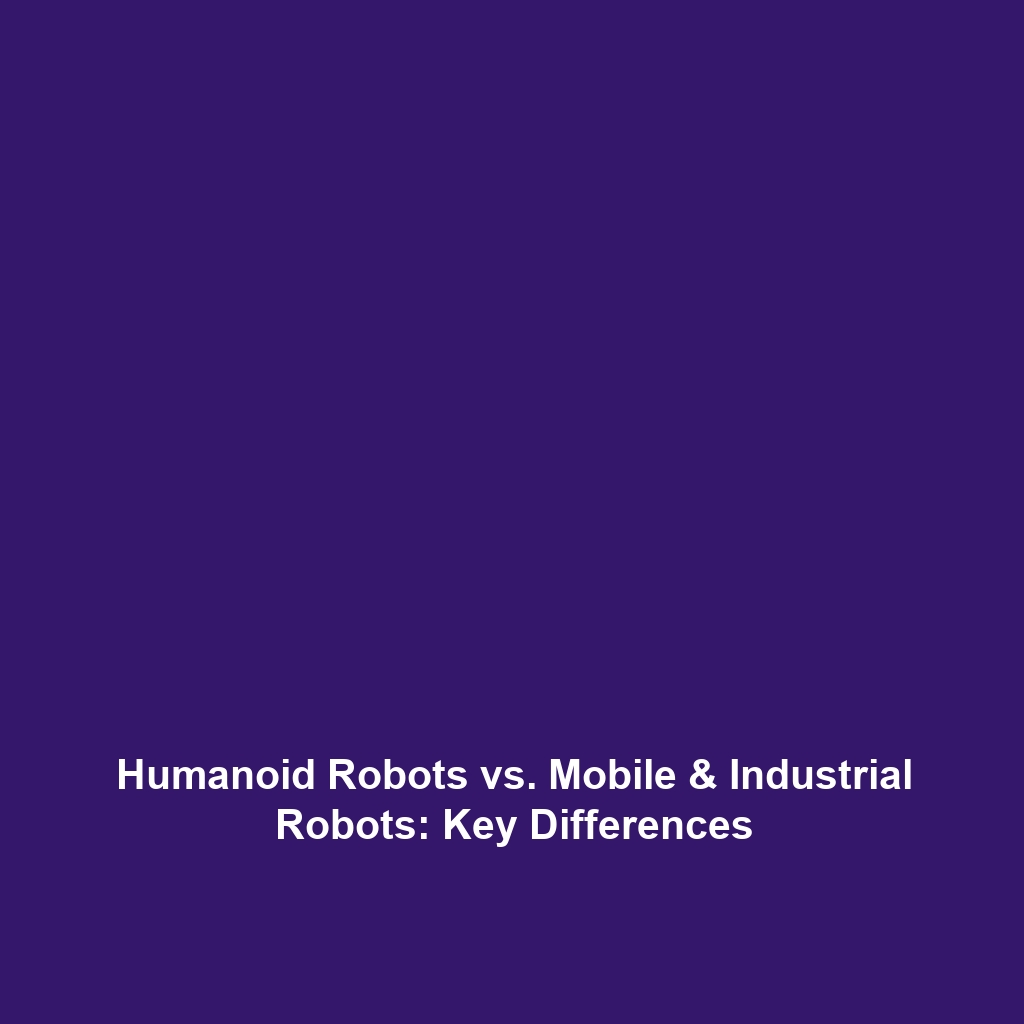Differences Between Humanoid Robots and Other Types of Robots
Introduction
In the rapidly evolving field of robotics, understanding the differences between humanoid robots and other types of machines, such as mobile robots and industrial robots, is essential. Humanoid robots, designed to resemble and mimic human form and behavior, play a unique role distinct from mobile and industrial robots, which are often designed for specific tasks and environments. This article delves into the characteristics, applications, challenges, and future innovations pertaining to humanoid robots.
Key Concepts
What are Humanoid Robots?
Humanoid robots are designed to perform tasks typically associated with humans, including interaction, communication, and socialization. They often feature anthropomorphic designs that allow them to engage in human-like movements and gestures.
Comparison with Other Types of Robots
In contrast, mobile robots are characterized by their ability to navigate their surroundings autonomously. Examples include robotic vacuum cleaners and delivery drones. Meanwhile, industrial robots are specialized machines used to perform repetitive manufacturing tasks, such as welding and assembly. The following table summarizes the main differences:
- Function: Humanoid robots focus on human interaction, while mobile robots prioritize navigation and industrial robots optimize manufacturing processes.
- Design: Humanoid robots have a human-like form; mobile robots can vary widely in shape, and industrial robots usually have mechanical arms.
- Application: Humanoid robots often serve in service and entertainment industries, while mobile robots are used in logistics and industrial settings.
Applications and Real-World Uses
Understanding how differences between humanoid robots and other types of robots manifest is crucial for practical applications. Here are some notable examples:
- Healthcare: Humanoid robots are being deployed as companions for the elderly and for aiding therapeutic practices.
- Education: In classrooms, humanoid robots act as teaching assistants to improve student engagement.
- Service Industry: Many businesses are using humanoid robots to greet customers and provide information, showcasing their social capabilities.
Current Challenges
Despite their promise, studying and applying differences between humanoid robots and other types of robots comes with several challenges:
- Integration with existing systems poses significant technical hurdles.
- High costs associated with development and maintenance of humanoid robots.
- Social acceptance and ethical implications of humanoid robots in daily life.
Future Research and Innovations
Looking ahead, several innovations may reshape the landscape of humanoid robotics:
- Advancements in artificial intelligence to enhance the social capabilities of humanoid robots.
- Improvements in mobility and dexterity through new materials and control methodologies.
- Increased focus on ethical AI to address societal fears regarding humanoid robots integration.
Conclusion
In summary, the differences between humanoid robots and other types of robots provide valuable insights into their respective strengths, applications, and challenges. Understanding these differences not only highlights the significance of humanoid robots but also assists in addressing the ethical considerations necessary for their integration into society. For further reading, check out our articles on current trends in robotics and practical uses of humanoid robots.

Leave a Reply